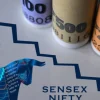- The CNN Fear and Greed index gives investors a great insight into stock market sentiment. Learning to read this useful tool often makes all the difference.
The CNN Fear and Greed index gives investors a great insight into stock market sentiment. Learning to read this useful tool often makes all the difference.
“Be fearful when others are greedy, and greedy when others are fearful.”
Legendary stock-picker Warren Buffett.
Contrarian traders typically look for opportunities that go against the beliefs of the majority of the market participants. This is often a valuable strategy that, when right, reaps outstanding returns.
One way to gauge sentiment in the stock market is to use the Fear and Greed index.
The Index ranges from 0-100. A reading between 0-25 indicates Investors are extremely fearful. Whilst 25-50 suggests fear, 50-75 tells us investors are greedy, and 75-100 points to extreme greed and often complacency.
Should you buy into Warrens’ way of thinking, an extreme fear reading indicates that the market overstates the downside risks. In contrast, the opposite is true for extreme greed.
How is the Index calculated?
CNN use seven indicators to calculate the index. Among them are market momentum, market volatility, and the options market’s bias towards puts or calls. Additionally, the index also considers the percentage of stocks that are advancing or declining.
On this basis, it does a lot of the work for traders trying to quantify how the rest of the market is thinking.
The below chart of the Nasdaq 100 illustrates how this can be used to identify potential market peaks and troughs.
An obvious place to start would be February and March of 2020. At the pandemic lows, the reading was rightfully through the floor and indicating extreme fear. However, we now know that this was a once-in-a-lifetime buying opportunity.
Furthermore, we can see as the market responded to central bank intervention, the price soon appreciated, and by the middle of March, the Fear and Greed index was signalling extreme greed. This marked the start of a mild correction, sending the gauge back into fear. Subsequently, the Nasdaq gained 10% in April and again swung the index higher into greed territory.
The most recent extreme fear reading came in April, ahead of the 15% appreciation in the Nasdaq.
Whilst there is no such thing as the perfect indicator, this is one of many tools traders can use to give them an edge.
Therefore it worth considering, especially during periods of extreme price action in either direction.
Fear and Greed Index in action
Follow Elliott on Twitter.





